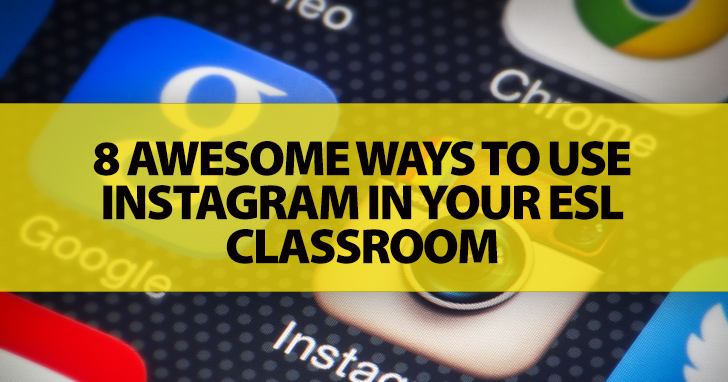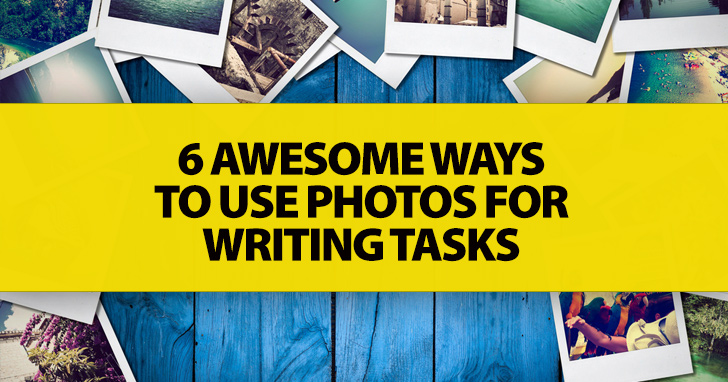8 Awesome Ways To Use Instagram In Your ESL Classroom


Photos are resources that are very easy to find and handle, especially now that we have access to very easy-to-use digital photography tools and photo sharing platforms.
So, how can we make use of photos for writing practice? Here are some ideas you’ll also want to share!We no longer have the need to cut out images from magazines or even print snapshots. With a click of a button, we can snap a pic and share it instantly with our class.

Lots of companies and Facebook pages engage their followers by sharing a photo, or a scene from a movie or TV show, and asking them to caption it. Try the same with your class. Look for photos on Facebook or Instagram you can easily share, or snap your own. If there is more than one person in the shot, you may ask your students for a short conversation or exchange. Share the photo in your class Facebook page or Instagram account.
Quite often, at the start of the school year, we ask students to describe their families. So why not ask them to complete a written description and add a photo to it? Have students upload the photo to the class Facebook page and add the written description to it, or have them bring a recent snapshot they can glue to the top of a page.
Take some photos of behaviors or things that are considered bad or just plain wrong, for example, litter on the sidewalk, graffiti on a wall or a leaky faucet; I recommend having an underlying theme, like the protection of the environment. Present these pictures to your class and have them write about what’s wrong with each photo and why. This is a great way to practice modals in the passive voice: Streets should not be littered. Trash must be deposited in trash cans. Garbage should not be left in public spaces.
Variation: A short stroll around the neighborhood might reveal several of these “crimes”. Ask your class, to take a look around, snap some photos and share them with a caption.
This is a fun writing exercise for young learners. Take a photo of a bedroom, and call it Room A. Next, make some changes in the bedroom; take some items out and replace them with others, for example, a green jacket on the bed is replaced with a red one. Add another poster so that now there are three instead of two. Take a photo, and call this Room B. Tell your class that Room A is Alison's bedroom, and Room B is Bella's. Ask them to write the differences between what each of the girls has got: Alison has got two posters, but Bella has got three. Alison's got a green jacket, but Bella’s got a red one.
In the late 70s, photonovels were quite popular. These were basically books made about films and TV shows with a comic book feel to it but featuring stills and images from the film. Check out some examples with these classic Doctor Who photonovels. Creating an entire photonovel might seem like an overambitious project, but it doesn’t have to be. First, have your students collaborate to write a short story. Next, assign roles and have them act out different scenes while you take photos of each. Print the photos. Finally, have your class assemble the photonovel by pasting the photos and writing the text that goes underneath each one.
We’re all familiar with the classic Show and Tell, an activity for which we ask students to bring something from home and talk about it in front of the class. Why not give it a spin and practice some writing? Ask students to bring a snapshot of something they have at home. Don’t forget your underlying theme! If you want to teach culture in a multicultural class, ask students to bring photos of things that are very typical to their country, maybe a tea pot used in a traditional Japanese tea ceremony, or a typical Greek food, like baklava. You may also ask them for photos of how they spent their holidays, their favorite books or their most prized possession.
Now instead of standing up in front of the class to describe the photo, students paste it onto a piece of paper and write about it. Make sure they leave some space at the bottom or on the back of their paper. Now, comes the fun part! When everyone’s finished, students pass around their work so classmates can see their photos and read their descriptions. Students leave comments or feedback at the bottom: That’s a great photo, Yuki! My grandmother has a tea pot just like that one.
Writing is often a lonely task; the only thing to look at is the blank sheet of paper. Students have trouble filling blank pages with thoughts. But if you provide some form of visual input, the writing flows more easily and naturally.
Snap a pic of their work and share it on Facebook or Twitter!
* This question was sent in from a real ESL teacher, just like you! If you need any advice on a particular topic, share your question in the comments below. Or tweet your question to @busyteacher_org with the hashtag #ESLTeachersAsk. Your question might get picked and featured in an article!